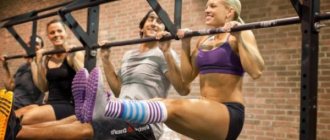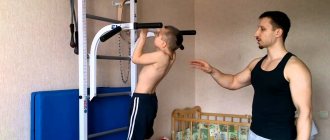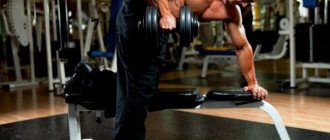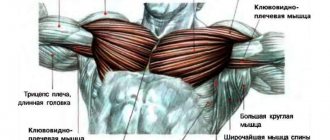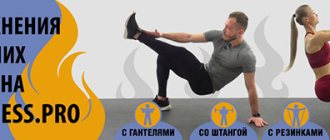School standards are not just a whim of the teacher, but an official requirement of the Ministry of Education. The state is interested in ensuring that the next generation is healthy, which is why there are standards that should motivate school students to improve their health and develop physical qualities.
Standards are divided into 5 types depending on physical qualities:
- Endurance
- Force
- Dexterity
- Flexibility
- Coordination
Thus, in order to get a good grade in physical education, a student must be fully physically developed.
What happens next with the regulations?
After students have passed the standards and received grades, they are transferred to statistics collection centers. There they are processed and averaged. This gives us a picture of how well school students in each grade “meet” the requirements offered by the program. If necessary, standards can be simplified or complicated depending on the direction of dynamics.
Physiologists use this data to track at what age children begin to experience strong growth in physical indicators. In general, standards are not only an assessment, but a whole chain of useful data.
Standards for pull-ups on the horizontal bar at school
class\score 5 4 31 class 4212 class 4213 class 5314 class 5315 class 7536 class 8647 class 9758 class 10859 class 119610 class 1210 711 class 14118Pull-up standards in the Russian army and special services
- Military conscripts who served less than 6 months – 12 / 10 / 7
- Conscripts who served for more than 6 months – 13/11/9
- Military personnel under contract up to 30 years of age – 10 times (minimum)
- Military personnel on contract for more than 30 years - 8 times (minimum)
- Airborne Forces - 13 times
- Special forces units – up to 25 times
For military personnel, see details here
How should you breathe when doing pull-ups on the horizontal bar? A little about safety precautions!
Dangerous or safe exercises do not exist, which cannot be said about the correct and incorrect technique. If the technique is incorrect, then any exercise can become dangerous. And pull-ups on the horizontal bar too! Beginners, as a rule, make a typical mistake during the exercise in the form of throwing their head back with a jerk and lifting their chin up. Many people do this while inhaling when pulling themselves up. It's a very instinctive process. By the way, they also bring the shoulders together. You should never do this! This can lead to severe injury to the cervical vertebrae and protrusion of hernias on the intervertebral discs.
The correct technique for performing an exercise should be understood as completely opposite actions. So, before doing a pull-up, you need to draw as much air into your chest as possible and hold your breath. In this way, you can ease the task of the latissimus dorsi muscles, which “push” the body upward, and also provide protection from stretching to the small muscles that serve the scapula. Otherwise, even with the slightest movement of the body, you will feel severe pain in your back. Remember that pull-ups are done to broaden your back, so you don't have to wriggle through the whole exercise to get any reps done. Pull-ups must be performed vertically, lowering your elbows. If you get a short amplitude, then you need to perform pull-ups on a machine that has a counterweight.
For the exercise to bring maximum benefit, you must:
- There is no need to swing your legs or body, and the rise and fall occur smoothly, maintaining one plane;
- When lifting/lowering, the upper body, like the forearms, should not be moved;
- When doing pull-ups, you need to keep your elbows under the bar;
- When descending to the bottom point of the trajectory, you need to fully straighten your arms and properly stretch your lats;
- When rising to the top point, you need to additionally squeeze your back muscles;
- Full range of motion must be used;
- Beginners sometimes find it difficult to do a clean pull-up on the bar, so they should first strengthen the Primary/auxiliary muscles by performing free weight exercises, as well as Negative/partial repetitions;
- Girls are better off using the gravitron;
- Breathing: when pulling up, exhale, when returning to the starting position, inhale.
- Approaches should be performed 3-5 times, repetitions 10-15.
Can a pull-up save a life?
As proven by numerous stories, the ability to do proper pull-ups and be in good physical shape are essential. Every fifth person in the world finds himself in various emergency situations. And in circumstances when it is simply necessary to tighten up - every man, more than once.
Let's give a simple example of a real-life incident that happened to an ordinary person. By the way, he was never shown on the news and there was nothing about him on blogs. This is a story about a man who is now 40 years old. One day he was locked in a burning basement room. There was no chair or furniture there. There were only old mattresses on the floor. The fire was located in the building itself. It was impossible to leave him through the door. The only way out was to get out through the window. And this eye was located under the ceiling. The man caught the window sill, jumping slightly. But after that he had to pull himself up to catch on the bars outside the window. He managed to break out the windows, but was unable to climb up. The man simply did not know how to pull himself up. Fortunately, firefighters arrived in time and saved the poor fellow. At that time he was unconscious. Knowing how to do this exercise will also help you master the inversion lift, for which there are also standards.
From this life story it is clearly seen that both men and women simply must be able to pull themselves up. Still, this is especially true for men who simply must be able to do at least a couple of pull-ups with a medium grip. Luckily for us, we don’t find ourselves in emergency situations so often. This exercise is studied mainly for the development of body muscles.
What are the benefits of pull-ups?
The high popularity of this exercise is explained primarily by the fact that it not only helps develop muscle strength and endurance, but also helps improve external physical fitness, strengthen ligaments, and have a beneficial effect on the athlete’s spine. Different muscle groups are involved in the exercises, and these loads can be varied in different ways. There is no doubt that pull-ups on the horizontal bar are useful. It is worth noting that for this there is no need to use any clever devices or special simulators. All you need is any strong crossbar, a body and the desire to improve it.
What are the benefits of pull-ups for women?
They allow:
- Form and strengthen the press;
- Improve physical fitness;
- Strengthen your posture;
- Improve blood circulation;
- Relieve spinal tension.
What are the benefits of pull-ups for men?
- Develops and strengthens the back and shoulder muscles.
- Serve as a prevention of osteochondrosis;
- Strengthens the vertebrae;
- Improve physical endurance;
- Positively affects hand strength.
Classification according to the method of gripping the crossbar
For almost any type of pull-up, the starting position is presented in the form of a standard hang. In this case, you need to bend your back a little, tuck your legs and cross them. There are the following types of grips:
- Straight narrow grip. Hands should be slightly less than shoulder-width apart. This grip is also called a narrow grip. While doing pull-ups, you should try to reach the bar with your lower chest. In this case, the gaze should be fixed on the fingers.
- Straight medium grip. Your hands should be shoulder-width apart. During lifting, the shoulder blades move towards each other. The important thing here is to touch the bar with your upper chest. To increase the effectiveness of the exercise, try to fully extend your arms while descending.
- Reverse middle grip. It is performed in the same way as the previous exercise, but the shoulders are pulled back and do not rise at the start.
- Neutral grip. Pulling up in this way is suitable for those who have already mastered other techniques, since during the execution of this grip the technique changes. For example, first the left hand will remain in front, and then the right one. It is necessary to touch the bar with the lower thoracic compartment. It is necessary to hold tightly to the horizontal bar, and one fist should be located in front of the other. When lifting up, you should bend your back a little.
- Wide grip when pulling to the chest. This method of exercise involves working the back muscles, not the biceps. Thumbs clasp the bar from above, arms are spread wide. When pulling up with your upper chest, you need to touch the bar, point your elbows down, and look above the horizontal bar.
- Wide grip when pulling up behind the head. This method is quite effective, but it is also quite dangerous. That’s why before you start doing the exercise, you definitely need to warm up and stretch your muscles well. The crossbar is grabbed with a wide grip with the elbows down. When pulling up, you need to slightly tilt your body forward and try to maintain a horizontal position. This exercise allows you to perfectly work out the round dorsal muscles, which are practically inactive with other methods of exercise.
When changing the method of gripping the horizontal bar (standards also change), the loads should be concentrated on different muscle groups. The loads will be distributed most evenly across all participating muscle groups with a classic straight grip, when the distance between the hands is average. During pull-ups on the horizontal bar using the wide-grip method, the back muscles are especially loaded. With a reverse grip, the load is placed on the biceps; with a narrow, forward grip, the shoulder muscles are also heavily loaded. You need to do pull-ups with weights.
What should a beginner know?
To achieve a positive result from exercises, you need to do them correctly. They should be started without a sharp jerk or rocking, gradually and regularly increasing the load. When pulling up, the muscles should not be tense; on the contrary, they should be relaxed. The body must be raised and lowered at the same intervals. During the lift, the chin rises above the bar. Don't overdo it, give your body time to recover. To avoid blisters, use gloves.
The most common mistakes beginners make when doing pull-ups:
Knowing how to do pull-ups for a beginner, you can start training. However, you should also take into account some points that often become mistakes of beginners in their first training sessions.
- Only the upper body should be involved in pull-ups on the horizontal bar. The legs are not subject to any stress. A beginner often sins with this, trying to somehow climb onto the horizontal bar in order to finally raise his chest above this same horizontal bar. He begins to swing his legs, giving impulse to his joints with such a rise, but this is completely wrong. The effect of pulling up can only be obtained when it is performed by the muscles of the back and arms. In this case, the back begins to work first when the shoulder blades are brought together and this ensures the necessary tension. And only after that the arm muscles are activated, which pull the body up.
- A fairly common mistake involves performing exercises with sudden movements. A beginner often makes careless sudden movements, especially when lowering, or rather, when falling down. It is not right! To ensure proper muscle growth, they must be included as much as possible in the work process, and sudden movements, on the contrary, relieve them of stress and at the same time increase the risk of injury. Every movement should be smooth and accurate. The ascent and descent must have the same rhythm.
- Another important point is the full straightening of the elbows. Beginners often do this when lowering their body. It is worth considering that during the exercise, the elbow joints receive quite a strong load, and therefore they do not need to be fully extended either during the ascent, much less during the descent, in order to prevent the risk of injury to the elbow joints.
When is it dangerous for your health to perform exercises on the horizontal bar? It is not recommended to train intensively on the horizontal bar for those who:
- Suffering from cardiovascular disorders;
- Has gallstones and/or kidney stones;
- Gastrointestinal diseases;
- Recovering after even a simple operation.
It is worth limiting yourself due to the need to provide protection from strong stress to vulnerable organs. Those who are severely obese should not hang or even pull themselves up. When an overweight person tries to lift his body, he subjects it to additional stress, like a bodybuilder who deliberately puts on a weight belt. Such pull-ups can only be acceptable for trained athletes who are in excellent athletic shape. A beginner should refrain from such experiments.
Control standards for physical education grades 1-11
The presented standards are developed for all students who have the “basic” health group. Students in the “preparatory” group take only those standards that do not fall under the section of contraindications. In a “special” group (SMG), the student is exempt from passing the standards and is engaged in a separate program. Ideally, students with serious health problems study separately during designated hours.
The tables will contain the designation “+” - this means that the standard is passed without taking into account time.
IV Category
Base:
1) Pull-ups - 25 2) Push-ups on parallel bars - 30 3) Push-ups from the floor - 50 4) Raising straight legs while hanging on a horizontal bar (toes touch the bar) - 20 5) Push-ups in a vertical handstand against a wall - 5
Elements:
1) Force-out for two – 10 2) Force-out for two with a narrow grip – 5 3) Force-out for two with a wide grip – 5 4) Force-out for two with a corner (first fix the corner, then perform an exit) – 1 5) Angle under the horizontal bar in a narrow grip - 5 seconds 6) Pull-ups on one hand (any quality) - 1 (on each hand) 7) Slow exit on two with an angle - 1 Horizontal hang from behind ("swallow") - 6 seconds
Horizontal hang from behind ("swallow") - 6 seconds
VI Category (CMS in workout)
Base:
1) Pull-ups - 35 2) Push-ups on parallel bars - 50 3) Push-ups from the floor - 70 4) Raising straight legs while hanging on a horizontal bar (toes touch the bar) - 30 5) Push-ups in a vertical handstand against a wall - 16
Elements:
1) Exit with force for two – 20 2) Horizontal support on straight arms (straight legs apart or together) – 3 seconds 3) From the horizontal support under the horizontal bar (1 sec) force yourself down into a horizontal hang from behind (3 sec) 4) Horizontal push-ups ( straight legs apart or together) – 3 5) One-arm pull-ups (without jerking) – 5 (on each arm) 6) One-arm pull-ups in a “towel in front” (on each arm) – 1 7) Horizontal front hang – 6 seconds Horizontal hang from behind (“swallow”) – 15 seconds 9) Horizontal support under the horizontal bar – 10 seconds 10) Angle under the horizontal bar in a narrow grip – 10 seconds 11) Flag – 8 seconds
Horizontal hang from behind (“swallow”) – 15 seconds 9) Horizontal support under the horizontal bar – 10 seconds 10) Angle under the horizontal bar in a narrow grip – 10 seconds 11) Flag – 8 seconds
Increasing the quantity
Having mastered the initial stage and learned to do pull-ups from zero to three times, the athlete sets new goals for himself - how to learn to do pull-ups many times? There are special techniques for these purposes. Classes should be gradual and systematic. On average, following the basic recommendations, you can increase the number of pull-ups by 5–10 times in a month:
- Before starting classes, you should take an ordinary sheet of paper and hold it between your knees. The main task is not to miss a leaf while doing the exercise. This technique significantly improves the quality and effectiveness of training and helps you learn to gradually increase the number of pull-ups in a short time.
- A good effect can be obtained if you pull yourself up from scratch using additional weight. Barbell plates, special weighted vests, or simple plastic water bottles placed in the athlete’s backpack can serve in this capacity. The main thing is to practice systematically and do pull-ups with additional weight as many times as possible.
- The frequent approach technique involves performing a large number of pull-ups with minimal repetitions. This means that you should approach the horizontal bar about five times a day, performing 3-4 pull-ups in one approach. Thus, over the course of a month, your personal best may increase by 5-7 pull-ups per cycle. In this case, the load distribution will be uniform.
- Increase the number of pull-ups using the ladder technique. Stepped load distribution involves performing a large number of approaches with frequent pauses. Perform a few exercises, then pause (30-40 seconds) and head back to the horizontal bar. During one workout, it is recommended to perform about 7 such approaches.
How to learn to do 30 pull-ups on a horizontal bar - this task is difficult, but doable for a serious athlete. Systematic and regular training from scratch with a gradual increase in the number of pull-ups and approaches will allow a beginner to learn how to do pull-ups many times and set his own personal record pretty soon. The ideal technique is to increase the number of pull-ups in each of them by 1-2 times with each subsequent week of training. Thus, after 6-7 weeks you will be able to do 30 pull-ups, even if you have never approached the horizontal bar before.
Rules:
Base
Pull-ups:
Pull-ups are performed with an overhand grip
(palms away from you). At the top point, the chin must be higher than the crossbar. Requires full extension of arms when lowering. When pulling up, you should avoid using your legs in the form of jerks, pushes, or swings. Try to keep your legs straight and together.
Dips:
In the upper position, the arms should be fully extended. In the lower position, the angle between the forearm and shoulder should not exceed 90 degrees (for those who don’t understand: the lower you go, the better). The body should be kept as level as possible (no swaying, no jerking, no writhing, etc.). There should not be a strong forward bend.
Pushups:
Hands shoulder width apart. At the top point, fully straighten your arms
. At the lowest point, the distance between the chest and the floor should be minimal. Place the camera in front of you. Keep your body straight, do not bend. Head raised.
Raising straight legs while hanging on the horizontal bar (toes touch the bar):
Try to keep your legs straight. The swing should be minimal. Grip (upper, lower) as desired. Don't bend your arms.
Vertical handstand push-ups against a wall:
Hands are slightly wider than shoulder width. Lowering to the maximum (until you touch your head). Push up until your arms are fully extended.
Elements
Inversion lift:
Legs should be straight. Be sure to straighten your arms in support.
Captain's Rise:
Performed by force (using the strength of the arms, and not sharply throwing the legs with the pelvis onto the horizontal bar). Preferably straight legs. After completion, you need to go out to sit.
Angle under the horizontal bar:
Legs should be straight. The angle between the legs and body should be 90 degrees.
Exit by force by one:
No swing. Without the help of legs. Mandatory straightening of the arms in support.
Exits with two strength (top, bottom, narrow and wide grip):
No swing. When lowering and when going into emphasis, you need to fully extend your arms. Both hands should move to the top position at the same time. Grip according to exit type. Leg assistance is minimal.
Horizontal hang from behind (“Swallow”):
The body should be smooth. The body should be parallel to the ground. Grip shoulder-width apart (overhand or underhand). Legs should be straight and flat.
Horizontal front hang:
The body should be smooth. The body should be parallel to the ground. Grip shoulder-width apart. Legs should be straight and flat.
Slow exit for two with a corner:
First fix the corner. The angle between the legs and body is 90 degrees. The pull-up should be slow (at least 3 seconds). Be sure to straighten your arms in support. In the lower position, you are allowed to bend your arms slightly.
Single pull-up:
If any quality is required, there is only one rule - the chin is above the horizontal bar in the upper position. In other cases: ● In the lower position, the hand must be level ● In the upper position, the chin must be above the horizontal bar ● Helping with legs, swinging, jumping from the ground is prohibited
Towel front:
When pulling up to one arm, the other arm should be straight. First you need to transfer your weight to your free hand, then go to point-blank range. When pushing, your arms should be straight.
Horizontal stop:
● The arms should be either straight or bent (depending on the requirement for the category) ● In the case of bent arms, the legs should be straight and together ● In the case of straight arms, the legs should be straight (if the 6th category is spread, on the 7th - mixed)
Forward power rotation:
The turn must be performed using force, and not by swinging the legs before performing the element.
Checkbox:
The body is parallel to the ground. Hanging sideways. Performed on any vertical apparatus. Hands are straight.
– this is a rather young and not entirely common sport for our country. However, it deserves special attention. It is the workout that allows you to develop not only physically, but also spiritually. Thanks to this direction, young people have a great opportunity to form a strong, beautiful athletic body. In addition, workout is a real philosophy of a healthy lifestyle. Even when you just look at young people performing various elements on horizontal bars and uneven bars, sometimes it takes your breath away. If you haven’t really decided yet whether you want to go to street workout, pictures with inspiring examples will make the choice for you.
V Rank
Base:
1) Pull-ups - 30 2) Push-ups on parallel bars - 40 3) Push-ups from the floor - 60 4) Raising straight legs while hanging on a horizontal bar (toes touch the bar) - 25 5) Push-ups in a vertical handstand against a wall - 8
Elements:
1) Power-up for two – 15 2) Slow way out for 2 with an angle – 3 3) Pull-up on one arm (without jerking) – 3 (on each arm) 4) Towel in front – 1 (both sides) 5) Horizontal hang front – 3 seconds 6) Horizontal support on half-bent arms (legs together and straight) – 3 seconds 7) Power rotation forward – 1 Horizontal hang from behind (“swallow”) – 10 seconds 9) Horizontal support under the horizontal bar – 6 seconds 10) Angle under the horizontal bar in a narrow grip – 7 seconds 11) Flag – 4 seconds
Horizontal hang from behind (“swallow”) – 10 seconds 9) Horizontal support under the horizontal bar – 6 seconds 10) Angle under the horizontal bar in a narrow grip – 7 seconds 11) Flag – 4 seconds
VII Category (MS in workout)
Base:
1) Pull-ups - 40 2) Push-ups on parallel bars - 60 3) Push-ups from the floor - 85 4) Raising straight legs while hanging on a horizontal bar (toes touch the bar) - 35 5) Push-ups in a vertical handstand against a wall - 25
Elements:
1) Pull-up with a force of two - 25 2) Horizontal support on straight arms (level legs together) - 3 seconds 3) Push-ups in a horizontal support (level legs together) - 5 4) Pull-ups on one arm (without jerking) - 7 (on each arm) 5) Horizontal hang from the front – 10 seconds 6) Horizontal hang from the back (“swallow”) – 25 seconds 7) Pull-up on one arm in the “towel in front” (on each arm) – 1 Horizontal support under the horizontal bar – 15 seconds 9 ) From the horizontal support under the horizontal bar (3 sec) forcefully lower into a horizontal hang from behind (6 sec) 10) Angle under the horizontal bar in a narrow grip – 15 seconds 11) Flag – 15 seconds
Horizontal support under the horizontal bar – 15 seconds 9 ) From the horizontal support under the horizontal bar (3 sec) forcefully lower into a horizontal hang from behind (6 sec) 10) Angle under the horizontal bar in a narrow grip – 15 seconds 11) Flag – 15 seconds
